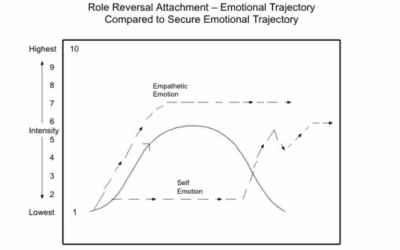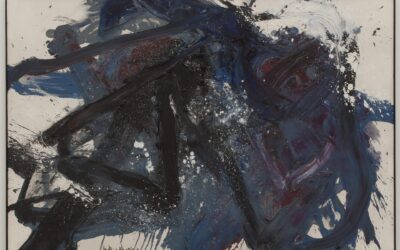 Who was Karen Horney:
Who was Karen Horney:
At the time of this writing, my daughter is two. Sometimes when my wife and I relax slightly in public, she will get a glimmer in her eye and, starting to giggle, run away from us. While we yell for her to stop, she will cackle between insulting us, content with her newfound power, as she runs away into a crowd of strangers or into oncoming traffic. When we take her to school or to meet new people, she wraps herself around my wife’s leg, pressing her cheek into my wife’s calf, and refuses to speak.
Two-year-old children cannot understand moderation. They demand to have “more food” even when their plate is overflowing. Minutes later, they will refuse to eat another bite because they are “full.” They cannot understand shades of gray. They refuse to believe that they need a nap until their eyes are closing. People are either all “bad” or all “good.” Individuating children live in a world of extremes with tunnel vision on their immediate present and their immediate understanding of a situation.
The Individuation Process Children do not understand that they are separate creatures from their mother. Multiple studies have proven that infants become more psychologically and physically healthy when they spend more time in direct contact, especially skin-to-skin contact, with their mother. Harry Harlow’s 1950 experiments, now considered classics in behaviorist psychology, proved that infant rhesus monkeys preferred contact with the mother over the ability to feed. Infant monkeys in Harlow’s experiment showed direct psychological detriment proportional to how quickly they were separated from their mother.
The first traumatic event in an infant’s life is the separation from the mother. When human infants are born, they do not know that they are a different being from their mother. Infants are connected to the mother for so much of their post-birth experience. In order to soothe infants, we try to make them feel as though they are still in the womb. We swaddle infants, keep them warm, and play white noise. The mother is both their source of physical comfort and nourishment. So much of the infant’s conscious experience is centered on its connection to its mother, that it makes sense that infants would lack the ability to understand what they are outside of the central reality of their experience.
After all, for the 9 months of their life before their birth, an infant is not a separate creature. It takes at least one and a half years for infants to begin to piece together that they will eventually have to become something separate from their mother. Because infants cannot understand their existence without their mother, this means that when they are inevitably forced to separate from their mother, infants feel like their existence is under threat. The inevitable and necessary task of the mother to separate the child from herself feels to the child like it is being obliterated.
This obliteration, or first threat to our existence, is the first trauma, and Karen Horney’s theory of personality and neurosis is built on examining its effect on an infant’s development. When toddlers begin to be separated from their mothers, they experience moments where they, like my daughter, think they are God and can run through traffic. They are completely independent, completely free, can do things “by themselves,” and will never need supervision or approval from parents again. They quickly alternate into periods of abject terror where they are horrified with their agency as an independent being and, often wrapping themselves around their mother’s leg, attempt to re-merge with her.
The distinction between infant and toddler is between a creature that cannot live independently and a creature that sometimes thinks it can. Toddlers alternate between rejecting all authority to become a god and trying to crawl back into the womb in order to forget they exist. Toddlers are just beginning to understand that adult life will be shades of gray area between these realities, and the stages of the toddler’s individuation can be seen as the child’s attempt to synthesize these competing and appealing realities.
We cannot remain connected to our mothers, our parents, and eventually our families. Our parents, especially our mother, must force us into becoming the self that is latent within us. Often, neither party is aware exactly of how this process is playing out, but mother and child are built to play their part regardless. Jung had hypothesized that it was the indifference of the parent that played the most formative role in the life of the child. This was definitely true of Jung’s own development. Horney’s theories develop this observation into a more complete psychology that connects parental style to the science that she observes with her patients.
As a trauma therapist, I use Horney’s theories constantly. The connection between the way that our parents give us attention and the way we learn to get attention from others in later life is endlessly relevant in many types of therapy, especially work with trauma. In Horney’s theory of neurosis, the way that a child individuates from a parent determines their coping style and predicts many of the psychological issues they may develop in later life. Horney observed that children deploy three different coping styles during the time they are separating from the parent and use the style to solve problems in later life based on what is effective.
Our parents are supposed to teach us that we are capable of healing and that when we make mistakes, we can forgive ourselves and be forgiven by others. Children who learn this in childhood will be more prone to take healthy risks, explore life and their own personality, and invest in positive relationships. When the child’s early experience with the parent leaves them with the belief that they are not capable of healing and that others will judge and abandon them, the child will be handicapped with anxieties and obsessions in various parts of their interpersonal functioning.
While this sounds easy enough on paper, as a father, I can tell you that it is a task that is more or less impossible. We will all inevitably damage our children in some way, even in healthy families. At some point, we disregard an emotion that is crucial to our child, or break some implied promise that is devastating to them. Sometimes parents do these things chronically in patterns of abuse and neglect, but often parents do them out of practicality, ignorance, or material reality beyond the child’s understanding. This leaves even healthy and well-adjusted people with some fundamental insecurities. While we all have specific things that cause us anxiety and lead us into obsession, abuse or neglect in childhood will cause a severe inability to reduce obsessive behaviors that early psychoanalysts called neurosis.
I will elaborate below on how I see each of these three coping styles utilized by my patients and the ways that you may want your characters to use them in your fiction. Before I do, it is important to remember that we all use some of each kind of style in order to navigate the hurdles of life. If we are healthy, we are able to switch freely and adaptively between the styles as needed to solve the problems of life. If we have damage or unmet needs in childhood, we are more likely to cling to one of the styles neurotically even if it damages our path to our own ends. Even healthy characters and people will revert in crisis to their primary style and begin to apply it rigidly to every encounter. Anxiety and obsession are what define neurosis, and if you find people and characters in crisis, you will always see these traits.
Moving Towards People Attachment Type
Summary
People with this style struggle to develop a strong sense of self and tie their self-worth to others’ approval. Key characteristics include:
Difficulty making decisions independently
Codependent relationships
Underdeveloped sense of identity
Anxiety, panic attacks, dissociation
Inability to access anger
Moving Towards People
In therapy, I help these individuals reconnect with their authentic preferences and emotions that were suppressed to please others. Learning to assert boundaries and express anger in a healthy way is key.
The first coping strategy that children will attempt in order to retain the connection with the parent during individuation is to ask for help. This makes sense, since we are born into this style as babies. As infants, we cry in order to make our mothers come running to our aid. If our mothers continue to come running to our aid for the rest of childhood, however, this can impair our development as we fail to learn to solve our own problems or grow as people. In extreme cases where our mothers will not separate from us enough to even allow us to get hurt enough to call for help, our interpersonal skills may be extremely impaired.
People and characters with this level of impairment see the entire world in terms of their mother and never learn to make their own judgments or form their own values. “What would mother think of this?” “That is against mother’s rules.” When persons of this type are separated from their mother because of things beyond their control, such as her death or being sent to school, they lack any ability to function without the black and white certainty of mother’s rules and her judgment. Because they have no ability to self-soothe without the warm glow of mother’s approval, a surrogate must be found.
Horney calls this neurosis the need for affection and approval. The sense of self in people with this personality type is incredibly diffuse as they are not able to watch others withdraw their approval even for good reason. The psychologist Albert Ellis used to tell his patients that “It is pathological to want to be liked by everybody all the time.” I often tell mine that “There are times when the loving or the honest thing to do is to piss someone off.” When we cannot stand to see our standards judged by other people, it means that we cannot have a stable sense of self with firm standards for our behavior.
This need often manifests as a form of codependency in relationships or friendships as people try to replace the stabilizing presence of a controlling caregiver with a different set of rules and boundaries. We learn to tolerate the anxiety of not knowing what to do and being forced to choose early in life. When we have not been allowed to adapt to making small choices over the life course, we decompensate in the face of larger overwhelming choices about our life and identity.
In therapy, when I encounter patients who have had a controlling caregiver and a corresponding inability to develop their own sense of identity, I start by asking them simple questions about who they are. Patients with an underdeveloped sense of personal identity will often have no idea what their basic preferences and beliefs are. Often, they will have found an abusive partner or a rigid social, political, or religious group to fill up the “blank” spaces in their identity. In healthy relationships, we are allowed to maintain our own sense of identity while still participating in a group affiliation or romantic partnership. Patients with a moving towards people neurosis will not find relationships like this because the freedom afforded them makes them too uncomfortable.
I always frame the therapy with these patients as an exciting adventure that we are going on together. We are going to discover who the patient is and who they want to become. Patients of this coping style often will try to figure out what the therapist wants them to do and what the “new rules” that the therapist has for their life are. Their primary fear is that they will do something “wrong” and don’t know what the “right answers” are to their life questions. It is easy for the inexperienced therapist not to recognize this dynamic and to feed into it by giving the patient yet another partner to please. I tell patients that “You are the only best expert in how to be you” and that “this is your bonsai tree, there is no wrong answer.”
While the freedom and gray area of this kind of personality development therapy is initially terrifying to patients, eventually this style of therapy becomes exhilarating as patients reconnect to a long-absent sense of self. Even though patients present to therapy blank and indifferent about their often abusive and traumatic history, they will start to recognize moments in the past when they had a strong emotion or a preference that was dismissed by a caregiver or a partner. “I was so angry that my clothes were picked out for me every day.” “I was told that good Christians don’t go to prom.”
Not all people in the moving towards people neurotic type will use a partner to try and complete their functioning. Often, I have patients with social and intellectual gifts that use admiration, fame, or envy in order to move towards people. Many people seek fame or attention, but those with a moving towards people neurosis will not be able to function without the admiration of others. The entire organizing principle of their behavior becomes an indirect way of finding approval. These patients are not able to determine the value or morality of their behavior without group approval. Social media abuse has become a way to develop this neurosis as members of this neurotic group can collectively poll the world about what it is that they should become.
I find that most of the patients that present to therapy with this coping style come in for feelings of anxiety, panic attacks, or dissociative episodes that have become detrimental to their functioning. These patients will usually have learned that anger is not allowed in their families of origin and have turned off any ability to be angry or assertive.
The emotion of anger is telling us that a boundary has been crossed or a rule has been broken. Rules are our expectations for other people and boundaries are our expectations for how people interact with us. “Take out the trash when it is full” is a rule. Whereas, “don’t talk to me that way” is a boundary. Some rules like “I don’t want my partner to cheat on me” are okay, but too many will make you overly controlling and land you in anger management. When we are in touch with anger, we are recognizing that we have the right to have these expectations and can be assertive when they are violated.
People who are raised with a controlling caregiver do not recognize that these boundaries are being violated and they do not believe that they have the right to enforce them. When we are not in touch with anger, the only emotion available to us becomes fear. Fear is the substitute emotion for anger, and when we should be experiencing a large amount of anger that is not available to us, we experience overwhelming fear as the substitute. The symptoms resulting from this fear anxiety are often panic attacks or dissociative episodes. Therapy with these patients often begins with me allowing them to recognize boundary violations and realize that they have the right to assert themselves when a boundary is breached. Teaching someone to feel anger will often immediately remedy anxiety symptoms as anger, the appropriate response to their scenario, now becomes available.
When writing fiction, being aware of how much access a character has to emotion, and which emotions, is an extremely important thing to understand. Characters that do not have access to anger will try to solve problems in different ways. They become passive actors trying to have control through others or through manipulation, wit, or passive aggression. Often, characters of this personality style are so uncomfortable with anger that in conflict, they will side with the least aggressive personalities regardless of how well-intended or moral they are. To these characters, their neurosis becomes their morality. The emotion of anger is so threatening that they see anyone with aggressive tendencies as the enemy.
I often tell patients that we feel emotion in our bodies before we feel it in our heads. The “big three” negative emotions – fear, anger, sadness – are a part of our limbic system and are modes of processing our fight or flight response. We are often acting on these emotions before we are aware that we are feeling them. They color our thinking before we are able to realize that our thought process is changing. A character with one of the “big three” negative emotions turned off or missing will think radically different from one that does not. Moving towards people type characters will often have anger turned off because there is some fundamental assertive or self-protective function of the personality that they do not think they are capable of accessing by themselves.
Moving Against People Personality Type
Summary
Moving Against People These individuals resort to aggression to get their needs met and struggle to access vulnerability. Common traits include:
- Hostile, domineering attitude
- Difficulty with emotional aspects of relationships
- Workaholism, tying self-worth to achievements
- Contempt for others’ weaknesses
- Inability to feel sadness or hurt
Therapy focuses on recognizing the hurt beneath the anger and redefining their value beyond accomplishments. Accessing vulnerability is essential for healing.
Moving Against People
In Horney’s theory of individuation, the individuating child will settle into one of three different personality styles based on what allows it to successfully reclaim its parents’ attention. The first style that children try is the moving towards people style. This is most familiar to the child since this is the style they are accustomed to using in infancy. If asking for attention and attempting to be close to the mother through affection fail, the child will next try aggression in order to force its caregiver to give it what it wants. If aggression is effective, the child will settle firmly into a moving against people personality style.
People with the moving against people personality style never had affection offered to them as children. They came from environments that were hostile or uncaring and handled the fundamental insecurity that these environments engendered by becoming aggressive. They never had the option of asking for the basic attention children need and instead learned to demand attention. Caregivers were neglectful and unresponsive until they fought for the little affection or attention available in their home.
These realities in their family of origin color these patients’ interpersonal style and assumptions about the world. These assumptions about others and the world are immediately recognizable in the first few minutes of the first therapy session when a patient with the moving against people personality style presents to therapy. Patients with the moving against people personality style are not likely to come to therapy and do not usually present to therapy until they are in crisis or are facing significant personal or professional losses due to their symptoms. Patients with the moving against people personality style are uninterested in the emotional parts of therapy and often present a list of demands in the first session that the therapist must comply with.
Just as patients with the moving towards people personality type often have anger turned off, patients with the moving against people personality type are often out of touch with their ability to feel hurt or vulnerable. Feeling the emotion of sadness is the most difficult of the “big three” negative emotions to be in touch with. Allowing yourself to feel sad requires that you have the ability to acknowledge your own vulnerability and also have hope for your own ability to heal.
Patients who were never taught that they could heal will be out of touch with sadness because they cannot have faith that the hurt will end if they let themselves acknowledge it. These patients are able to live more adaptable lives when they learn to recognize in therapy that they are not actually angry most of the time. Most of the time, when they are expressing anger, it is because they are hurting. Patients with the moving against people personality style often believe they are weak or worthless if they allow themselves to be in touch with their own vulnerability.
Moving Away From People Personality Type
Summary
Having failed to get their needs met through connection or aggression, these individuals retreat into a rich inner world. They tend to be:
Highly creative and self-aware
Uncomfortable relying on others
Sensitive to subtleties in relationships
Prone to overthinking and mood swings
Drawn to counterculture movements
Expressing their authentic self is paramount, often through art, humor, or eccentric lifestyle choices. Building trust and finding healthy ways to connect are important therapeutic goals.
Moving Away from People
Horney’s three neurotic personality styles can most simply be understood as dependency (moving towards people), aggression (moving against people), and resignation (moving away from people). The resigned type is the result of the developing child discovering that they are unable to get the attention of the parent either through asking for attention or demanding it. The child then retreats into an inner world where it creates its own systems of psychological reward through creativity and self-expansion.
If you are a writer or a psychotherapist, it is highly likely that you are strongly developed in this area, even if you are not quite neurotic! The ability to move into your head and create your own rules and concepts for life is a useful skill, but not one we learn from asking or demanding attention from our parents. These personality types are more able to see through the arbitrary nature of the rules or traditions in a society and have less attachment to the culture of their society or the family that they were brought up in. Joseph Campbell, discussed in chapter 5, calls those of this path left-hand path heroes.
All of the neuroses that Horney observes can be understood as the limiting conditions that a person with insecure attachment has for being safe. The dependent type needs others to feel safe, while the aggressive type needs control. A person in the “moving away from people” neurotic type only feels safe when some condition of solitude or independence has been fulfilled. Depending on the personality and culture of the person, however, the attitude of the person with this neurosis can present in a variety of different ways. Some want to be invisible, living an unassuming and unremarkable life. Other persons will become obsessed with independence, sometimes fiscal independence, but other times they become adventurers, dilettantes, or survivalists.
The moving away from people personality type is not comfortable unless they are absolutely independent in certain areas. While the moving towards people type needs people in order to function, and the moving against people personality type needs people in order to become dominant, the moving away from people type feels unsafe if it needs people for anything substantial. This does not mean that they are unsuccessful socially, only that they are uncomfortable with relying on social or emotional ties to others in order to feel stable. Having failed to maintain a connection with their parents through either dependence-seeking or aggressive behaviors, these types learned to soothe themselves and developed their own coping skills.
This process of learning to regulate one’s own emotions as a child without assistance leads children into their own head where they develop a large and elaborate inner world. Children become less interested or even aware of external realities like norms, social play, or practical tasks. Instead of learning to manage their feelings, they become fascinated with them. These persons will almost always be thinking much more than they say. They are often very creative, whether or not they recognize the expressions of their personality that they are injecting into the things that they create, the way they live, and the work they do. Self-expression in this personality style not only served the purpose of letting these persons learn to soothe themselves as children but also allows them to “trick” others into understanding them by encoding their personality into humor, style, or storytelling.
These patients are recognizable in therapy because they are the slowest to feel safe with the therapist. Moving away from people personality type persons will feel safer in smaller groups and communities that allow them to “read the room” and understand how people will interact with each other and themselves in advance. Other personality styles are more reactive and are able to interact with larger and more complex groups without feeling overwhelmed. Often this style can be too in touch with their feelings and overly need to document or express their experience creatively or verbally.
Moving away from people personality type patients have a unique knack for encoding their beliefs, personality, and opinions into artistic creations because they neurotically crave the recognition and understanding that was denied them by their caregivers as children. Art, humor, fashion, business even, is a way of communicating something about yourself to others in a way that it feels they will be more likely to accept. At some point in development, moving away from people style patients believed that some part of them was not allowed or would not be accepted. This is one of the reasons that humor and even art is usually associated with outgroups in American and other cultures. Persons that feel excluded from an early age build internal mechanisms in order to wrap up the unacceptable parts of themselves in wrapping paper that they thought would make others accept it.
Using Horney’s Personality Styles in Screenwritting and Fiction
Summary
The Individuation Process
Infants are born believing they are one with their mother. The gradual and often traumatic process of separating and becoming an individual is, according to Horney, the root of neurosis. As toddlers navigate this separation, they adopt one of three coping strategies:
Moving Towards People
– Seeking safety and approval through dependence on others
Moving Against People
– Becoming aggressive and domineering to get needs met
Moving Away from People
– Withdrawing into an inner world of creativity and self-sufficiency
While everyone uses all three styles to some degree, we tend to favor one as our “default mode,” especially when stressed. Whichever strategy proved most effective at recapturing our caregiver’s attention in childhood becomes our go-to way of interacting with the world.
Conclusion
As a writer, understanding Horney’s three neurotic personality styles can add depth and complexity to your characters. By considering how your characters’ early experiences and relationships with their caregivers shape their coping mechanisms and interpersonal styles, you can create more nuanced and realistic portrayals of human behavior.
For example, a character with a moving towards people style might constantly seek validation from others, struggle with codependency, and have difficulty making decisions independently. Their arc could involve learning to develop a stronger sense of self and set healthy boundaries in relationships.
A character with a moving against people style, on the other hand, might resort to aggression and dominance to navigate the world, always needing to feel in control. Their journey could be about accessing vulnerability and learning to connect with others on a deeper level.
Finally, a character with a moving away from people style might be highly creative and self-aware but struggle with intimacy and prefer solitude. Their story could explore the challenges and rewards of opening up to others and finding a sense of belonging.
By understanding the roots of these patterns in early childhood experiences, you can create characters whose thoughts, feelings, and behaviors are grounded in a coherent and compelling psychological reality. And by showing their growth and transformation over the course of the story, you can take readers on a satisfying emotional journey.
Of course, it’s important to remember that these styles exist on a spectrum, and most people exhibit a mixture of all three to varying degrees. The goal is not to pigeonhole characters into rigid categories but to use these concepts as a starting point for exploring the rich complexities of the human psyche.
Ultimately, by delving into the inner worlds of your characters and understanding the psychological forces that drive them, you can create stories that resonate with readers on a deep, instinctual level. Whether you’re writing literary fiction, genre fiction, or something in between, Horney’s insights offer a powerful tool for bringing your characters to life and exploring the timeless struggles and triumphs of the human condition.
Further Reading
Karen Horney Life Timeline and Biography:
1885 – Born on September 16 in Hamburg, Germany.
1906 – Enrolled in medical school against her parents’ wishes.
1909 – Married Oskar Horney, a law student.
1910 – Gave birth to her first daughter, Brigitte.
1911 – Graduated from the University of Berlin with a medical degree.
1913 – Gave birth to her second daughter, Marianne.
1915 – Began studying psychoanalysis with Karl Abraham, a colleague of Sigmund Freud.
1920 – Moved to Berlin and became a founding member of the Berlin Psychoanalytic Institute.
1926 – Presented her paper “The Flight from Womanhood” at an international psychoanalytic congress.
1932 – Moved to the United States to escape the rise of Nazism in Germany.
1934 – Began teaching at the New School for Social Research in New York City.
1937 – Became a faculty member of the New York Psychoanalytic Institute.
1941 – Published her book “New Ways in Psychoanalysis,” marking her break from traditional Freudian theory.
1942 – Founded the American Institute for Psychoanalysis.
1950 – Published her book “Neurosis and Human Growth.”
1952 – Died on December 4 in New York City at the age of 67.
Karen Horney was a prominent German-American psychoanalyst known for her significant contributions to the field of psychology. She challenged traditional Freudian views on female psychology and emphasized the importance of social and cultural factors in shaping personality. Horney’s theories focused on the impact of interpersonal relationships, particularly early childhood experiences, on an individual’s psychological development. She introduced concepts such as “basic anxiety,” “neurotic needs,” and “self-realization” to explain the origins and manifestations of neurosis. Horney’s work had a lasting influence on humanistic psychology and feminist psychology.
Karen Horney’s Books and Key Points:
1. “The Neurotic Personality of Our Time” (1937)
– Introduced the concept of “basic anxiety” as a result of feeling isolated and helpless in a hostile world.
– Described ten neurotic needs that individuals may develop to cope with basic anxiety.
– Emphasized the impact of social and cultural factors on personality development.
2. “New Ways in Psychoanalysis” (1939)
– Critiqued traditional Freudian theories, particularly those related to female psychology.
– Stressed the importance of present-day experiences and interpersonal relationships in shaping personality.
– Introduced the concept of “self-idealization” as a defense mechanism.
3. “Self-Analysis” (1942)
– Provided a guide for individuals to explore their own unconscious thoughts and emotions.
– Emphasized the importance of self-awareness and self-understanding in personal growth.
– Discussed the role of defense mechanisms in coping with anxiety and conflict.
4. “Our Inner Conflicts” (1945)
– Explored the concept of “neurotic conflicts” arising from conflicting neurotic needs.
– Described three basic strategies for coping with conflict: moving toward, against, or away from others.
– Emphasized the importance of developing a realistic self-image and healthy relationships.
5. “Neurosis and Human Growth” (1950)
– Introduced the concept of “self-realization” as the ultimate goal of psychological development.
– Described the “ideal self” and the “real self” and the conflicts that arise between them.
– Emphasized the importance of developing a healthy, flexible self-image and authentic relationships.
6. “Feminine Psychology” (1967, published posthumously)
– Collected essays challenging traditional views on female psychology and gender roles.
– Emphasized the impact of social and cultural factors on women’s psychological development.
– Explored topics such as motherhood, work, and relationships from a feminist perspective.
Throughout her works, Karen Horney emphasized the importance of understanding the individual’s subjective experiences, the impact of social and cultural factors on personality development, and the role of interpersonal relationships in shaping the self. Her theories challenged traditional Freudian views and provided a more holistic and socially-oriented approach to understanding human psychology.
Bibliography:
- Horney, K. (1937). The Neurotic Personality of Our Time. W.W. Norton & Company.
- Horney, K. (1939). New Ways in Psychoanalysis. W.W. Norton & Company.
- Horney, K. (1942). Self-Analysis. W.W. Norton & Company.
- Horney, K. (1945). Our Inner Conflicts. W.W. Norton & Company.
- Horney, K. (1950). Neurosis and Human Growth. W.W. Norton & Company.
- Horney, K. (1967). Feminine Psychology. W.W. Norton & Company.
- Harlow, H. F. (1958). The Nature of Love. American Psychologist, 13(12), 673-685.
- Jung, C. G. (1968). The Archetypes and the Collective Unconscious. Princeton University Press.
- Campbell, J. (1949). The Hero with a Thousand Faces. Pantheon Books.
Further Reading:
- Paris, B. J. (1994). Karen Horney: A Psychoanalyst’s Search for Self-Understanding. Yale University Press.
- Rubins, J. L. (1978). Karen Horney: Gentle Rebel of Psychoanalysis. Dial Press.
- Quinn, S. (1987). A Mind of Her Own: The Life of Karen Horney. Summit Books.
- Westkott, M. (1986). The Feminist Legacy of Karen Horney. Yale University Press.
- Fromm, E. (1947). Man for Himself: An Inquiry into the Psychology of Ethics. Rinehart.
- Sullivan, H. S. (1953). The Interpersonal Theory of Psychiatry. W.W. Norton & Company.
- Bowlby, J. (1969). Attachment and Loss, Vol. 1: Attachment. Basic Books.
- Winnicott, D. W. (1965). The Maturational Processes and the Facilitating Environment. International Universities Press.
- Miller, A. (1979). The Drama of the Gifted Child. Basic Books.
- Yalom, I. D. (1980). Existential Psychotherapy. Basic Books.
Key Ideas and Main Points:
Karen Horney’s Theory of Personality and Neurosis:
Based on the individuation process of children separating from their mothers
The first trauma is the separation from the mother, which feels like obliteration to the child
Children develop coping strategies to deal with this separation
Three Coping Styles (Neurotic Personality Types):
a) Moving Towards People:
Seek approval and affection
Struggle with independence and decision-making
Often have anxiety and difficulty accessing anger
b) Moving Against People:
Use aggression to get needs met
Difficulty with vulnerability and emotional aspects of relationships
Often workaholic, tying self-worth to achievements
c) Moving Away from People:
Retreat into inner world and creativity
Value independence and self-sufficiency
Can be highly self-aware but struggle with intimacy
Impact of Childhood Experiences:
The effectiveness of these coping strategies in childhood shapes adult personality
Parental indifference or control can lead to neurotic tendencies
Healthy development requires learning to heal and forgive oneself
Therapeutic Approaches:
Help patients reconnect with authentic emotions and preferences
Teach assertiveness and boundary-setting
Encourage self-discovery and identity formation
Applications in Writing:
Understanding these personality types can add depth to character development
Consider how characters’ early experiences shape their coping mechanisms
Use personality styles to create realistic character arcs and conflicts
Horney’s Contributions to Psychology:
Challenged traditional Freudian views, especially on female psychology
Emphasized social and cultural factors in personality development
Introduced concepts like “basic anxiety” and “self-realization”
Key Works by Karen Horney:
“The Neurotic Personality of Our Time” (1937)
“New Ways in Psychoanalysis” (1939)
“Neurosis and Human Growth” (1950)
Read More Depth Psychology Articles:
Taproot Therapy Collective Podcast
Influential Psychologists


























0 Comments